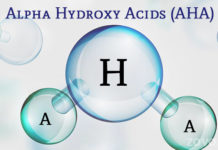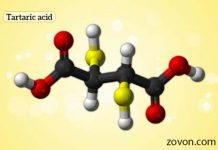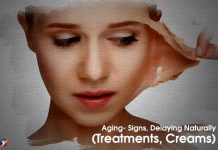
Glycolic Acid Sources, Benefits and Side Effects

Glycolic acid is a very versatile compound which finds use in textile industry, as a skin care agent in the cosmetic industry and as a preservative in the food industry. Glycolic acid is the smallest molecule in the family of alpha hydroxy acids and it is this property of glycolic acid that makes it useful in cosmetic industry.
Like all other alpha hydroxy acids AHAs, it is naturally present in many fruits in small quantities whereas it is present in a considerable amount in sugarcane. In its natural form, it can be isolated from sugarcane and certain fruits like unripe grapes and pineapples. It can also be synthesized chemically in a number of ways. It is a colorless and odorless compound which is soluble in water. Its chemical formula is C2H403.
Structure and Composition of Glycolic Acid:
It belongs to a family of the group of water-soluble chemicals commonly referred as Alpha hydroxy acids. Before proceeding ahead, let us understand what are Alpha hydroxy acids? They refer to a group of water-soluble chemicals. Even if they are acids, they are safe to be used at home and by professionals but low dosages are preferred.
Natural Sources:
It can be easily derived from the following
- Sugarcane
- Pineapple
- Sugar beets
Benefits of Glycolic Acid:
- Glycolic acid is an exfoliant and therefore it helps to remove the dead layer of cells from your skin.
- It brings smoother texture to your skin and an even skin tone.
- It clears blocked pores and blackheads.
- For acne treatment, it is one of the best cures.
- The fine lines and signs of premature aging are reduced to a large extent.
- With consistent glycolic acid treatment, acne scars start fading.
- It removes the ‘barrier’ of dead cells and surface grime.
- The compounding effects are there when they are used frequently.
- The appearance of pores is minimized.
- Glycolic acid with low percentage is used in skincare products and it does not cause any irritation.
- Skin conditions like Psoriasis, Melasma and Seborrheic keratosis can be treated with it.
- It replenishes lost moisture to the skin.
- It helps in plumping up the skin.
Applications of Glycolic Acid:
It penetrates the skin deep as it is made of small molecules. And it is used as a remedy to treat fine lines, acne, blackheads, as well as dullness, oiliness etc. It even helps to improve the uneven texture of the skin. It helps to reveal smooth, bright and younger looking skin as dead skin cells are sloughed off.
Things of precaution:
- Skin may become sensitive to the sun by applying glycolic acid and therefore sunscreen is a must while taking glycolic acid treatment.
- Continue application of sunscreen for several weeks even after terminating the use of glycolic acid.
- No acne medication (Accutane) should be used after undergoing AHA treatment on your skin as your skin becomes sensitized using these products and it may result in an allergic reaction.
- First-time use of AHAs can result in flaking and if picked it can result in scarring and hyperpigmentation of the skin.
- Use AHAs with caution as the higher concentration is never a guarantee of better results.
Side Effects:
- It is easy to develop dry and patchy skin with the use of glycolic acid, if not done correctly.
- It shouldn’t be used on delicate skin like the areas around the eyes as it can increase the intensity of appearance of dark circles.










